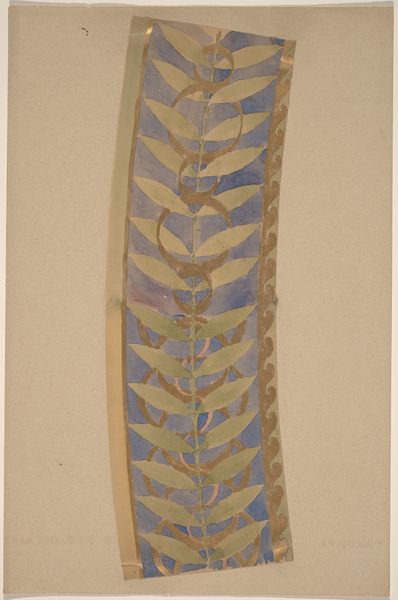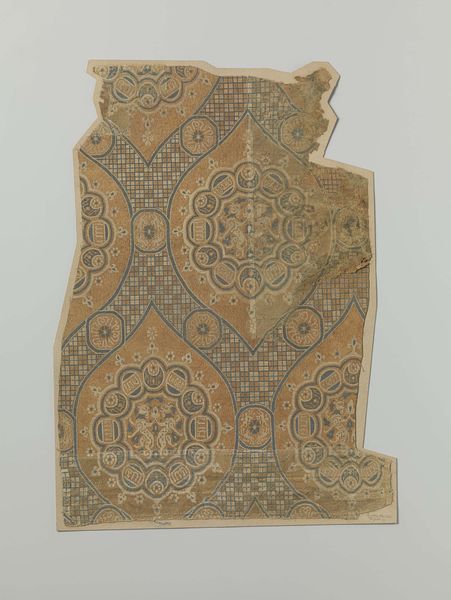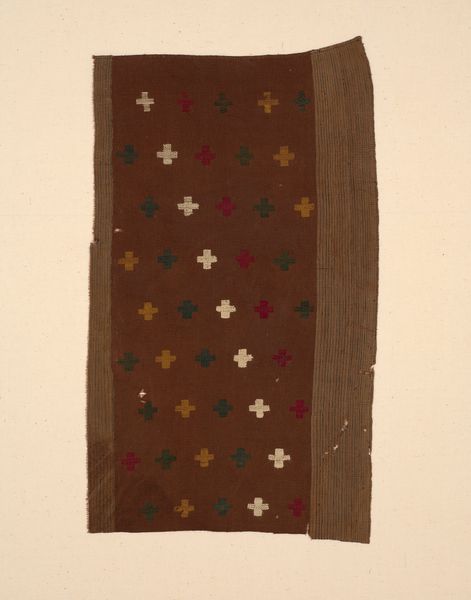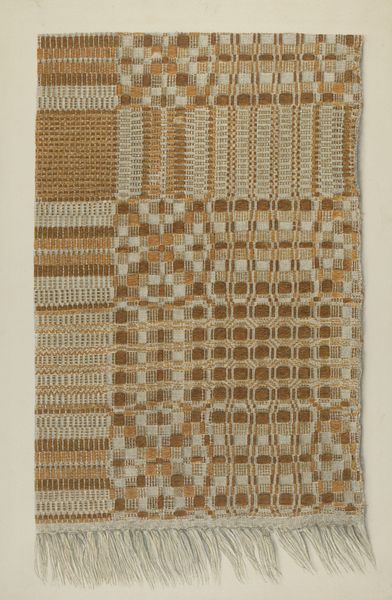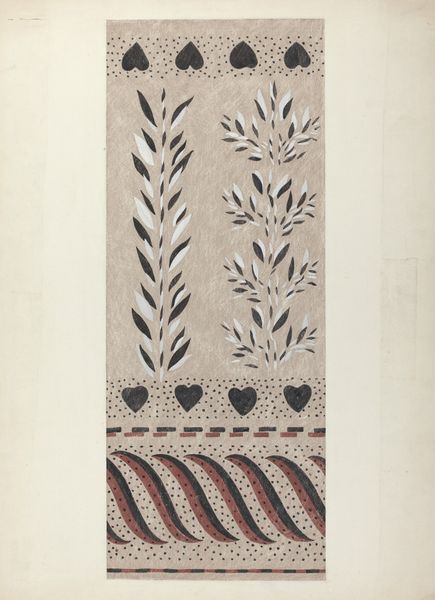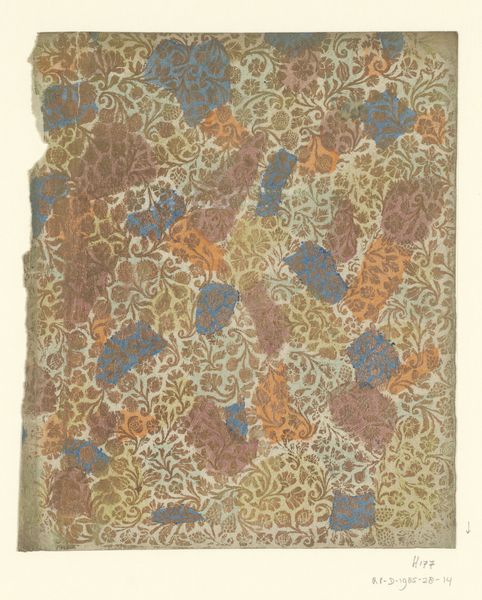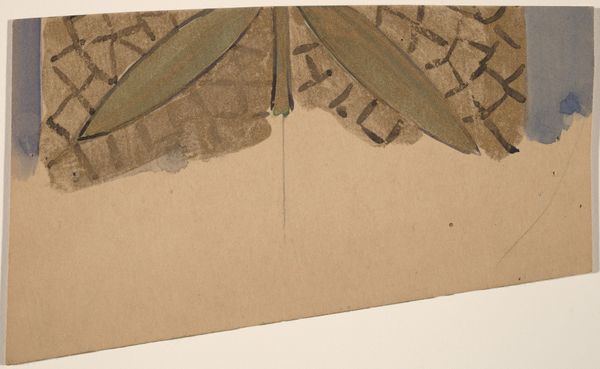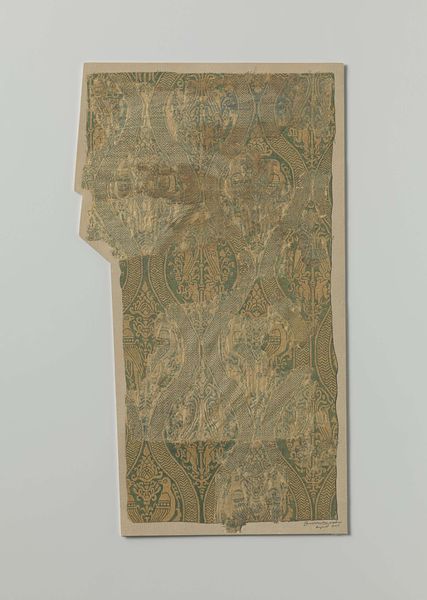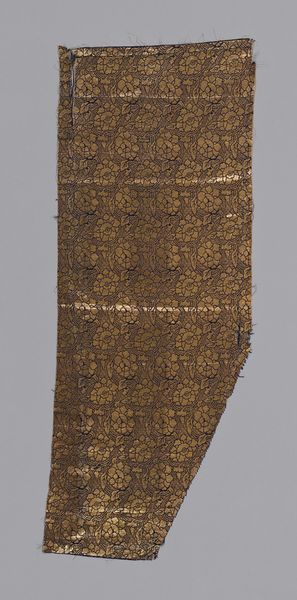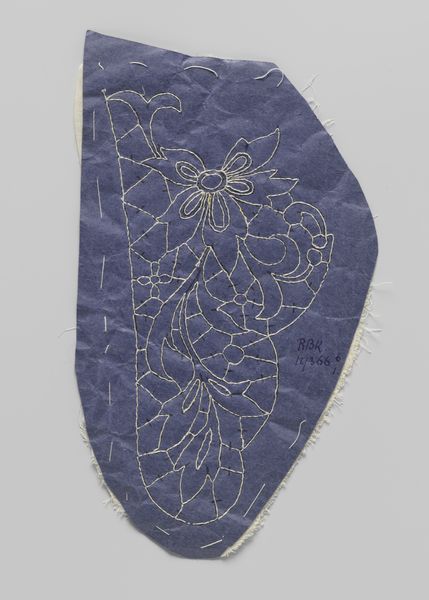
drawing, textile, paper
#
drawing
#
arts-&-crafts-movement
#
pattern
#
textile
#
paper
#
repetitive shape and pattern
#
geometric
#
fabric design
#
pattern repetition
#
textile design
#
decorative-art
Dimensions: sheet (irregular): 35.3 × 12.7 cm (13 7/8 × 5 in.) mount: 46.7 × 30.2 cm (18 3/8 × 11 7/8 in.)
Copyright: National Gallery of Art: CC0 1.0
This is Charles Sprague Pearce's Study for a Border Design. At its core, it features a stylized botanical motif rendered with careful geometric precision, which speaks to humanity's eternal fascination with nature's order. The image's central element, a vertical arrangement of leaves, immediately brings to mind the classical laurel wreath. In ancient Greece and Rome, laurel symbolized triumph, honor, and immortality, adorning the brows of victors and emperors. This is not a new motif. Think of its recurrence on Renaissance medals or as a decorative element in Baroque architecture. Each use subtly reaffirms a connection to the values of classical antiquity. But consider this: While the laurel speaks of victory, perhaps, on a deeper level, it speaks of our enduring psychological need to find order and meaning in the natural world. It is a powerful symbol that engages us on a deep, subconscious level. It is a non-linear, cyclical progression of a symbol that resurfaces, evolves, and takes on new meanings in different historical contexts.
Comments
No comments
Be the first to comment and join the conversation on the ultimate creative platform.
